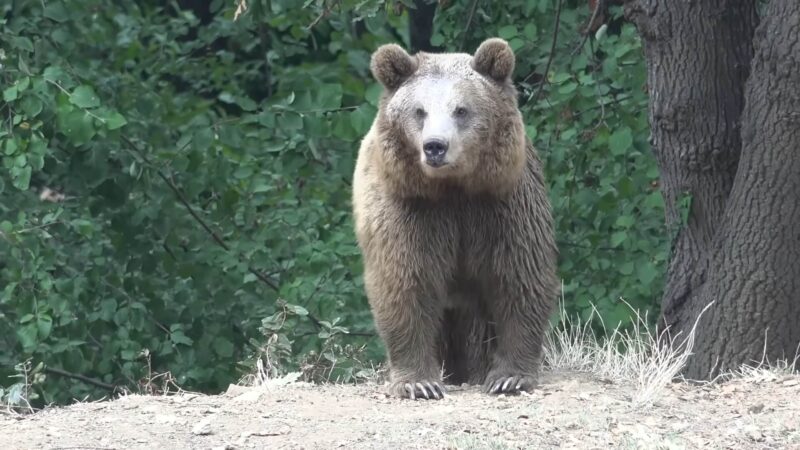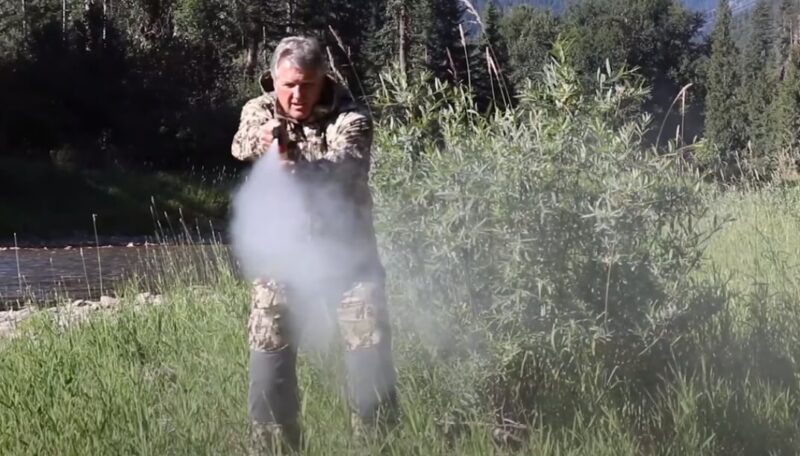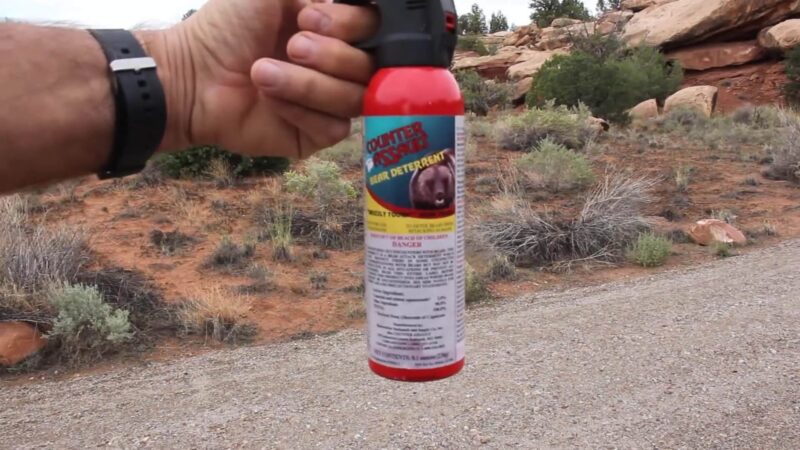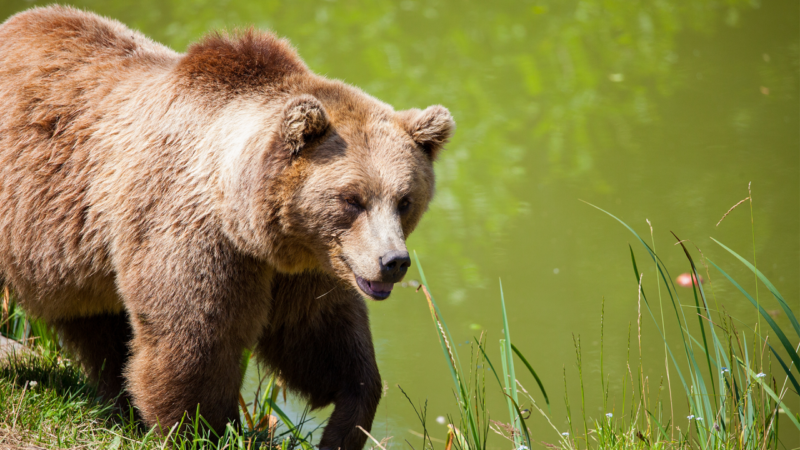Bears are powerful wild animals and encountering one can be dangerous. While attacks are rare, understanding how to defend yourself is crucial for safety. The strategies outlined here are designed to help you prevent confrontations and react appropriately during encounters.
Can Human Outrun a Bear?

The short and straightforward answer is no, a human cannot outrun a bear. They are swift creatures, able to reach speeds that far exceed the fastest human sprinters. Understanding this physical reality is crucial for anyone venturing into areas where bears are present.
These animals, depending on their species, can reach speeds of up to 30 to 40 miles per hour (48 to 64 kilometers per hour). This is significantly faster than the world’s fastest human, Usain Bolt, who set the world record for speed at 27.8 mph (44.72 km/h) over a 100-meter distance. Moreover, bears can maintain these high speeds over longer distances than a human can sustain a sprint.
This incredible speed is a result of their powerful leg muscles and evolved body structure, which is designed for quick bursts of speed, especially when they feel threatened or are hunting. Another factor to consider is the terrain.
They are adept at navigating through dense forests, over rough terrain, and even up steep slopes, where humans would struggle. Their agility and ability to handle various types of ground make them formidable pursuers. On the other hand, humans are not built for such versatile and high-speed navigation in wild terrains.
How to Defend Yourself?
Defending requires a blend of prevention, preparedness, and understanding of how to react in an encounter. The key is to minimize risk and de-escalate any interactions.
Prevention and Preparation

Your first line of defense is to avoid an encounter altogether. Staying aware in bear habitats is crucial. This involves making noise to alert them of your presence, such as talking loudly or clapping. When camping or hiking, store food properly using containers and keep it away from your sleeping area. These animals have an amazing sense of smell.
During an Encounter

If you encounter this wild animal, staying calm is essential. These animals are more likely to retreat if they do not feel threatened. Identify yourself by speaking in a calm voice, helping the bear recognize you as a human and not a threat.
Slowly backing away, while avoiding sudden movements and maintaining your distance, can help prevent the situation from escalating. If you find yourself in a situation where a bear has noticed you, it’s vital to remain calm. They are usually more interested in understanding what you are rather than looking for a confrontation. Speak calmly to let it know you are human and not a prey animal.
Avoid direct eye contact, which can be perceived as a challenge. Instead, use peripheral vision to keep track of the movements. Do not run or make sudden movements, as these can trigger a predatory response in a bear.
Instead, try to back away slowly while facing it. If the bear approaches, stand your ground. Often, a bear will bluff charge, stopping or veering away at the last moment. It’s important to understand that a standing bear is typically curious, not aggressive. Give the bear space and time to assess the situation and, in most cases, it will move away.
Using a Defensive Spray

Using the spray is an essential safety measure when venturing into areas with bear activity. It is a specific type of pepper spray designed to deter aggressive or charging bears. It contains capsaicinoids, which are derived from hot peppers and cause temporary discomfort and irritation to the bear’s eyes and respiratory system, giving you time to retreat to safety.
My Top Picks

- Counter Assault Bear Deterrent Spray: This spray is highly rated for its 40-foot spray distance, the farthest reach on the market. It has a 10.2-ounce capacity per canister and an eight-second spray duration, allowing for multiple bursts. It’s praised for its ease of use, even in high-stress situations.
- SABRE Frontiersman Bear Spray: Known for its reliability and long range, the SABRE Frontiersman is a popular choice. It is often recommended as the best overall bear spray and is particularly suited for hiking and backpacking.
- Mace Brand Guard Alaska Maximum Strength Bear Spray: This spray is highlighted for its value, providing a strong deterrent effect at a more affordable price.
- UDAP Bear Spray Safety Orange: This spray comes with a Color Griz Guard Holster and is recommended for its reliability. It’s also considered an excellent budget-friendly option.
How to Use it Effectively?
- Carry It Accessibly: It should be carried where you can quickly access it, not buried in your backpack.
- Know How to Use It: Practice removing it from the holster and aiming it.
- Aim and Spray: If the wild animal is charging or behaving aggressively, aim the spray towards its face and deploy it. The cloud of pepper irritant will create a barrier between you and the bear.
- Retreat Safely: After using the spray, back away slowly. Do not turn and run, as this could trigger a chase response from the bear.
In Case of an Attack
In the unlikely event that a bear approaches you, one of your strategies should be to make yourself appear larger. This can be done by raising your arms, opening your jacket, or standing on higher ground. The goal is to convince the bear that you are not prey and that you may be a threat to it.
This tactic can be particularly effective with black bears, which are usually less aggressive and more easily intimidated than grizzlies. If you are in a group, stand close together to create the illusion of a larger, more intimidating entity. Bears rely on their perception of size and strength when assessing a threat. A larger, seemingly stronger opponent can discourage a bear from advancing.
Additionally, making loud noises and speaking firmly can reinforce your presence, further dissuading the bear from approaching. Traveling in groups significantly reduces the risk of a bear attack. Larger groups are noisier and more noticeable, which can deter bears from approaching. When hiking in bear country, stay close together and keep children near. The combined noise and smell of a group are usually enough to alert bears to human presence, giving them the opportunity to avoid an encounter. In the event of a bear sighting, a group can appear more intimidating.
By standing side-by-side, the group can appear larger and more formidable to a bear, potentially deterring an aggressive approach. Remember, bears are generally not interested in confrontations and will usually choose to avoid human interaction when possible. However, if a bear does approach, having multiple people can provide safety in numbers, allowing for a coordinated effort to deter the bear.
FAQs
Why shouldn’t you run away from a bear?
Running away from a bear can make it chase you. You cannot outrun a bear, as they are much faster than humans.
Can someone outrun a bear?
No, you cannot outrun a bear. The only way to escape a bear is to use bear spray, play dead, or fight back, depending on the situation.
Should you try to scare a bear away?
It depends on the type of bear and the behavior it shows. For black bears, you should try to scare them away. For grizzly or brown bears, you should avoid eye contact and slowly back away.
What is the saying if you run into a bear?
There is a saying that goes like this: “If it’s black, fight back; if it’s brown, lie down; if it’s white, good night.” However, this saying is not always accurate, as bears can vary in color and behavior.
Summary
By understanding the behavior of these animals, employing preventive strategies, and equipping oneself with effective deterrents like bear spray, outdoor enthusiasts can significantly enhance their safety. It’s important to remember that encounters are generally rare and can often be resolved peacefully. Education, respect for wildlife, and responsible behavior are key to ensuring a safe and enjoyable experience in nature’s vast and beautiful landscapes.
Related Posts:
- Do Beavers Make Good Pets? What You Need to Know…
- How to Make a Compost Heap: 10 Top Tips - Waste Not,…
- 8 Facts You May Not Know About The Armadillo Shell -…
- Hydrogen vs Electric Cars: Which One Offers a Better Future?
- How Do Wild Horses Survive? - A Fascinating Study
- What Is the Difference Between a Coyote and a Wolf?…








